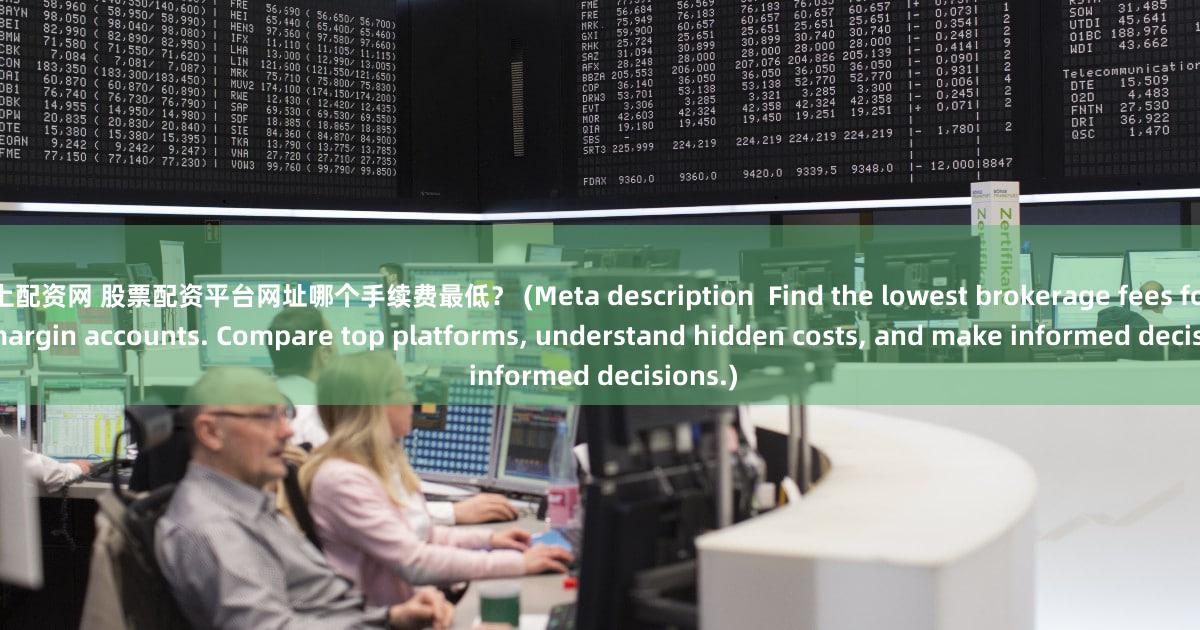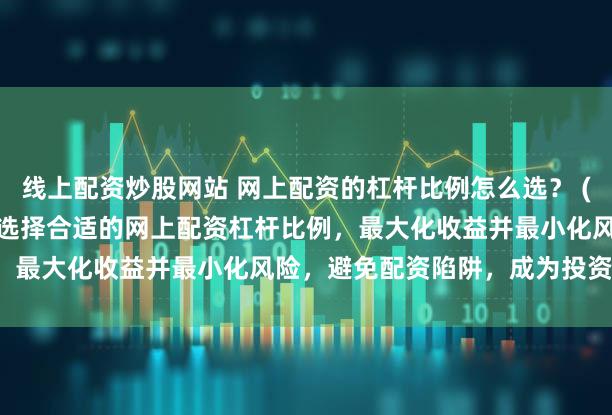
股票配资平台网址哪个手续费最低? (Meta description: Find the lowest brokerage fees for stock margin accounts. Compare top platforms, understand hidden costs, and make informed decisions.)
Unlocking Your Investment Potential: Finding the Best Stock Margin Account with the Lowest Fees
Choosing the right stock margin account can feel like navigating a minefield. Everywhere you look, promises of low fees and incredible returns abound. But let's be honest, the fine print often tells a different story. Hidden fees, complex pricing structures, and confusing jargon can leave even seasoned investors scratching their heads. This isn't just about saving a few bucks; it's about maximizing your returns and protecting your hard-earned capital. Choosing a platform with sky-high fees is like driving a race car with leaky tires – you might have the horsepower, but you're constantly fighting against unnecessary drag. This comprehensive guide will cut through the noise, outlining how to identify the truly lowest-cost options, helping you steer clear of those sneaky hidden charges, and ultimately empowering you to make smart, informed decisions about your investment strategy. We’ll delve into the nuances of different fee structures, dissect common misconceptions, and offer practical tips to help you find the perfect platform for your needs. So buckle up, because finding the best deal isn't just about luck; it's about knowledge, and we're here to equip you with both. Get ready to transform your investment journey!
股票配资平台手续费比较
Finding the absolute lowest brokerage fee is a bit of a moving target. Rates fluctuate, promotions come and go, and what's cheapest for one investor might not be ideal for another. Instead of focusing solely on the headline number, we need to consider the total cost of ownership. Think of it like buying a car – the sticker price isn't the whole story; you also need to factor in insurance, maintenance, and fuel.
Here's a breakdown of the key fee components you should scrutinize:
-
Commission Fees: This is the most straightforward fee, charged per trade. Some platforms offer flat-fee structures, while others use tiered pricing based on trade volume. Look for transparency here – no hidden charges or surprise increases.
-
Account Maintenance Fees: Some platforms charge a monthly or annual fee simply for having an account. This can add up quickly, especially for less active traders.
-
Interest Rates on Margin: If you're using margin (borrowing money to invest), the interest rate you pay is a crucial factor. These rates can vary significantly, so compare them carefully. High interest rates can easily eat into your profits.
-
Data Fees: Some platforms charge extra for real-time market data or advanced charting tools. Consider whether these are essential for your trading style.
-
Transfer Fees: If you're moving your investments from another brokerage, be aware of potential transfer fees.
Table 1: Hypothetical Fee Comparison (Illustrative Purposes Only)
| Platform | Commission (per trade) | Account Maintenance | Margin Interest Rate | Data Fees | |-----------------|------------------------|----------------------|-----------------------|------------| | Platform A | $5 | $0 | 7% | $10/month | | Platform B | $0.01 per share | $10/month | 8% | $0 | | Platform C | Free (with conditions) | $0 | 6.5% | Included |
Note: The above table is purely illustrative. Actual fees vary considerably depending on the platform, your trading volume, account type, and other factors. Always check the platform's fee schedule directly before making any decisions.
如何找到最低手续费的股票配资平台?
Finding the lowest-cost platform requires more than just a quick Google search. It's about doing your homework and understanding your own needs. Here's a step-by-step guide:
-
Define Your Trading Style: Are you a day trader, swing trader, or long-term investor? Different platforms cater to different styles. Day traders, for example, might prioritize low commission fees and fast execution speeds, while long-term investors might focus on account maintenance fees and research tools.
-
Compare Fees Transparently: Don't just look at the headline commission rate. Dig deeper into the fee schedule to uncover any hidden charges. Look for platforms with clear and easy-to-understand pricing structures.
-
Read Reviews and Check Ratings: See what other investors have to say about their experiences with different platforms. Sites like Trustpilot, BrokerChooser, and independent financial news sources can offer valuable insights.
-
Consider Customer Support: Exceptional customer support is invaluable, especially when you encounter problems or have questions. Check the platform's online resources, contact their support team directly, and see how responsive they are.
-
财盛证券
Assess Platform Features: Do you need advanced charting tools, research capabilities, educational resources, or other specific features? Consider these requirements when comparing platforms. Sometimes a slightly higher fee is justified if the platform offers essential tools that significantly improve your trading efficiency.
隐藏费用及陷阱
Beware of those sneaky hidden fees! These can significantly increase your overall costs and negate any perceived savings from a low commission rate. Common hidden fees include:
- Regulatory Fees: These are typically small but can add up over time.
- Inactivity Fees: Charged if you don't execute a certain number of trades within a specific period.
- Withdrawal Fees: Fees for transferring money out of your account.
- Early Account Closure Fees: Penalties for closing your account before a certain period.
- Data and Software Fees: Extra charges for real-time data feeds, advanced charting, or specific software.
选择合适的股票配资平台的关键因素
Beyond fees, consider these critical factors when choosing a platform:
-
Platform Reliability and Security: Choose a reputable platform with a strong track record of security and reliability. Look for platforms with robust security measures to protect your investments.
-
User-Friendliness: The platform should be easy to navigate and use, regardless of your technical expertise. A user-friendly interface saves time and frustration.
-
Educational Resources: Many platforms offer educational resources, such as webinars, tutorials, and market analysis. These can be invaluable for both beginners and experienced investors.
-
Research Tools: Access to reliable and up-to-date market data and research tools can significantly improve your investment decisions.
-
Mobile App Availability: Mobile trading apps allow you to monitor your investments and execute trades on the go. Make sure the app is user-friendly and functions smoothly.
常见问题解答 (FAQ)
Q1: Are all low-fee platforms equally good?
A1: No, absolutely not. While low fees are attractive, don't let them be the only factor in your decision. Consider the platform's reliability, security, customer support, and available features. A slightly higher-fee platform might be a better choice if it offers significantly better services and security.
Q2: How often do brokerage fees change?
A2: Brokerage fees are subject to change. While some platforms offer fixed fee structures, others may adjust their fees periodically. It's crucial to regularly check your fee schedule and stay informed about any changes.
Q3: What if I need help understanding the fee structure?
A3: Don't hesitate to contact the platform's customer support team. They should be able to explain their fees clearly and answer any questions you have. If you struggle to understand their explanation, that's a red flag.
Q4: Can I negotiate brokerage fees?
A4: Generally, you cannot directly negotiate commission fees, but some platforms may offer discounts or promotions based on trading volume or account size. It's worth looking into.
Q5: Are there any free stock trading platforms?
A5: While some platforms advertise "free" trading, they often have hidden fees or require certain conditions, such as minimum account balances or specific trading patterns. Read the fine print carefully before signing up.
Q6: What's the best way to monitor my fees?
A6: Regularly review your account statements and trading confirmations to track your fees and ensure there are no unexpected charges. Most platforms provide detailed transaction history online.
结论
Finding the lowest-fee stock margin account requires careful research and attention to detail. Don't be swayed solely by the headline number; consider the total cost of ownership, including hidden fees and the platform's overall value proposition. Prioritize a platform that aligns with your trading style, offers robust security, and provides excellent customer support. Remember, investing is a marathon, not a sprint, so choose a platform that will support your long-term financial goals. Happy investing!
文章为作者独立观点,不代表财盛证券观点
- 上一篇:正规的配资 实盘配资平台有没有试用版?
- 下一篇:配资通 在线炒股配资适合新手吗?






